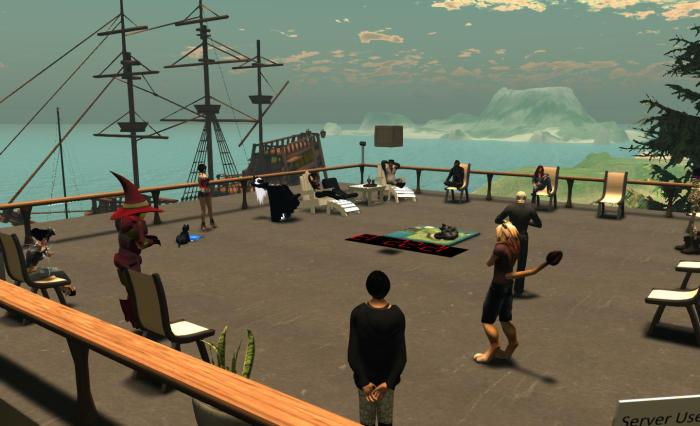SL Server Deployments
As always, please refer to the server deployment thread in the forums for the latest news and updates.
There was again no server deployment to the Main (SLS) channel on Tuesday March 25th. Of the three RC channels, there will be no change to either BlueSteel or LeTigre on Wednesday March 26th. However, the Magnum RC will be updated with a new server maintenance project, comprising:
- Crash mode fix.
- Fixed a rare case in which certain users were unable to log in (BUG-5130)
- Fix for a case in which multiple scripts in the same prim calling llTakeControls() with heterogenous ‘accept’ and ‘pass_on’ parameters would not receive a control() event correctly in some cases (BUG-5281)
- Updated LSL syntax file to use a new schema (fixes STORM-2000)
The LSL syntax file update for STORM-2000 is part of a large project being undertaken by Ima Mechanic with assistance from Oz Linden (see STORM-1831). This work is currently awaiting the release of viewer-side changes, which have been undergoing testing by LL’s QA.

SL Viewer Updates
On Monday March 24th, the FmodEx Hotfix viewer (3.7.4.288138, release notes here) was updated to the de facto release viewer. The core updates in this viewer comprise:
- Crash fix (MAINT-3703)
- Update FmodEx library to 4.44.31
- Additional work for MAINT-2718 (Linux viewer was using logging version of library)
Group Chat Work
During the Simulator User Group meeting on Tuesday March 25th, I asked Simon Linden about the outcome of the group chat tests run on Thursday March 20th, now that there’s been time to check the logs files. He said, “It didn’t have any surprises, but that was a good result. That test was mostly checking out the new statistics it gathered, which worked fine too.” He also confirmed that testing with a large group (most likely the Firestorm support group) is the next step in proceedings:
It’s been delayed a bit due to some people being out of the office. I’m hoping to do something next week … I think that’s the earliest possible. In the mean time I’m working on another layer in the back-end system that is inefficient, so I’m hoping to finish that up today or tomorrow and roll it in together.
Other Items
Revision to the TPVD Directory
The Third-party Viewer Directory received a change to the section listing viewers that report crash statistics. Whereas previously, viewers in this section had been ranked from best to worst crash rate (% of sessions that end in a crash), as from March 25th, they are now ordered from best to worst disconnect rate (% of sessions that end without the simulator seeing a logout).
Regions Size Trivia
During a discussion on vehicle design and region crossings, Simon Linde made mention of the factor that he once spent time looking at region sizes in SL. This isn’t the first time he’s mentioned this work. The last time he raised it, he went to far as to indicate that were regions ever to be resized, increasing them to 1 km a side rather than 1024 metres a side would be preferable, although this would impact the power of 2 approach taken with building SL. At the Simulator UG meeting, he reiterated this latter point, saying, “unfortunately the 256×256 region space is carved into the SL design all over … from the database to the simuators to the viewer and the messages. Changing that would be huge.”







